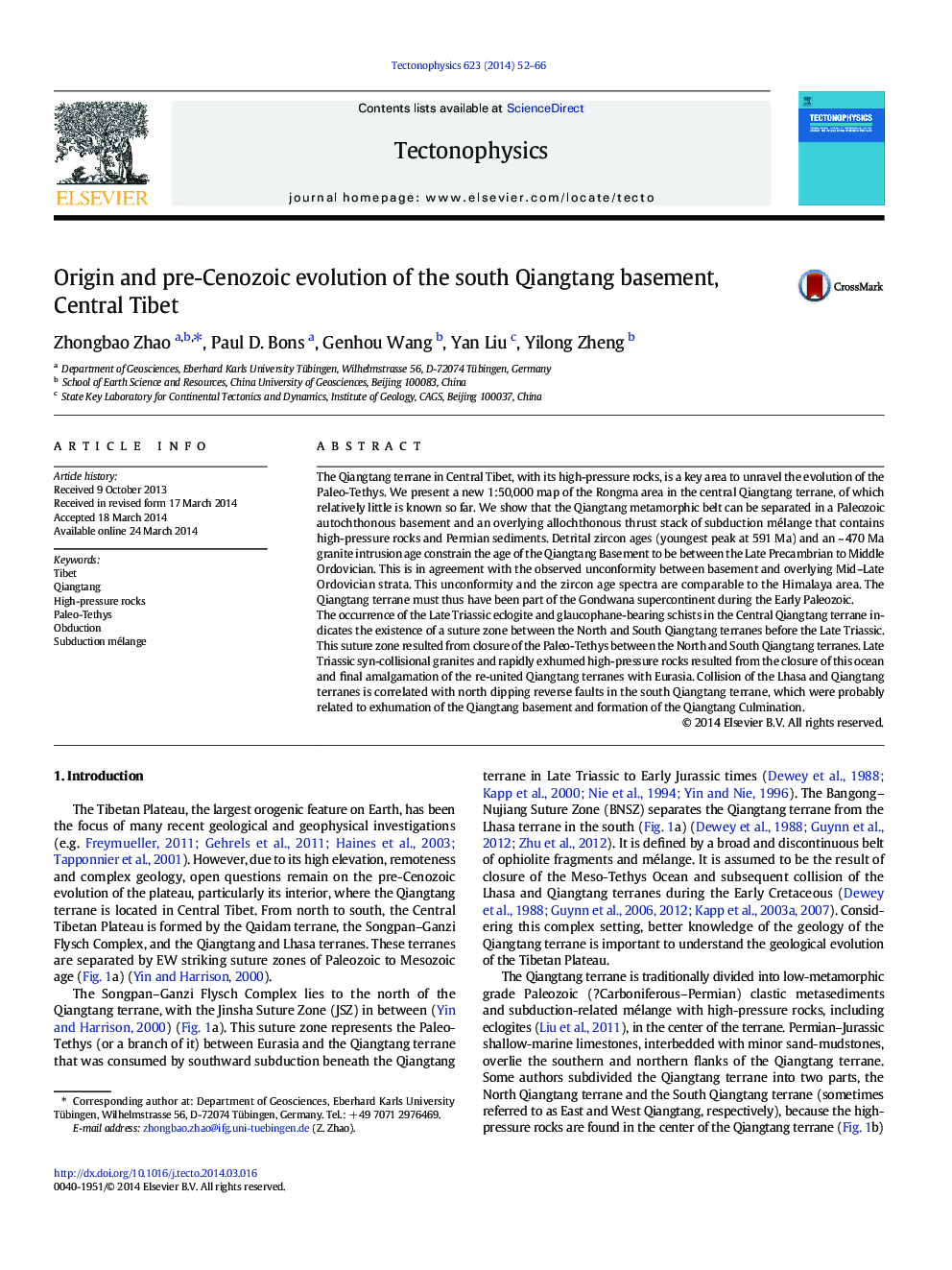| کد مقاله | کد نشریه | سال انتشار | مقاله انگلیسی | نسخه تمام متن |
|---|---|---|---|---|
| 4691983 | 1636767 | 2014 | 15 صفحه PDF | دانلود رایگان |

• New detailed map of the central Tibetan Qiangtang terrane
• First record of Early Ordovician granodiorite in the South Qiangtang terrane
• Ordovician unconformity described in the South Qiangtang terrane
• Qiangtang terrane originated at northern margin of Gondwana
• Subduction mélange obducted on top of Qiangtang basement in Late Triassic
The Qiangtang terrane in Central Tibet, with its high-pressure rocks, is a key area to unravel the evolution of the Paleo-Tethys. We present a new 1:50,000 map of the Rongma area in the central Qiangtang terrane, of which relatively little is known so far. We show that the Qiangtang metamorphic belt can be separated in a Paleozoic autochthonous basement and an overlying allochthonous thrust stack of subduction mélange that contains high-pressure rocks and Permian sediments. Detrital zircon ages (youngest peak at 591 Ma) and an ~ 470 Ma granite intrusion age constrain the age of the Qiangtang Basement to be between the Late Precambrian to Middle Ordovician. This is in agreement with the observed unconformity between basement and overlying Mid–Late Ordovician strata. This unconformity and the zircon age spectra are comparable to the Himalaya area. The Qiangtang terrane must thus have been part of the Gondwana supercontinent during the Early Paleozoic.The occurrence of the Late Triassic eclogite and glaucophane-bearing schists in the Central Qiangtang terrane indicates the existence of a suture zone between the North and South Qiangtang terranes before the Late Triassic. This suture zone resulted from closure of the Paleo-Tethys between the North and South Qiangtang terranes. Late Triassic syn-collisional granites and rapidly exhumed high-pressure rocks resulted from the closure of this ocean and final amalgamation of the re-united Qiangtang terranes with Eurasia. Collision of the Lhasa and Qiangtang terranes is correlated with north dipping reverse faults in the south Qiangtang terrane, which were probably related to exhumation of the Qiangtang basement and formation of the Qiangtang Culmination.
Journal: Tectonophysics - Volume 623, 2 June 2014, Pages 52–66